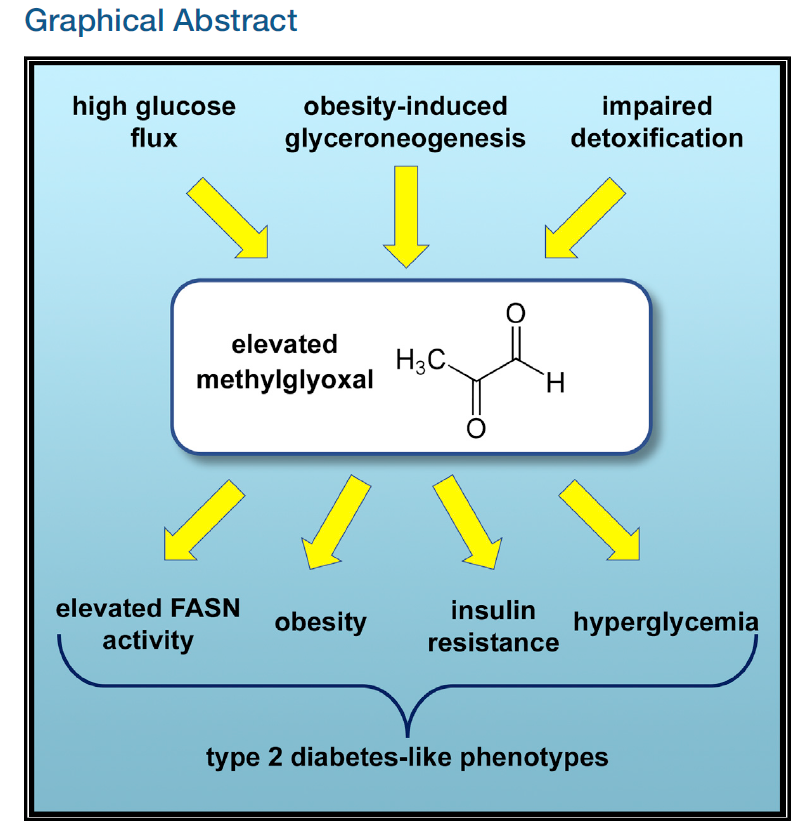Introduction: For a long time, insulin resistance and elevated blood glucose levels are thought to be the cause of type 2 diabetes. However, in a recently published study, the evidence provided by scientists shows that facts may be very different from “previous cognition”!

On March 15, the paper entitled "Elevated Levels of the Reactive Metabolite Methylglyoxal Recapitulate Progression of Type 2 Diabetes" was published in Cell Metabolism. In the fruit fly, it is the metabolite methylglyoxal (MG) level. The increase led to typical metabolic disorders of diabetes, as well as insulin resistance, obesity, and elevated blood glucose levels.
Type 2 diabetes is a typical type of middle-aged or elderly diabetes that can cause serious complications, including increased risk of heart disease and stroke, and severe eye, nerve, and kidney damage. Previously, these dangerous late effects were thought to be caused by hyperglycemia, and the incidence of myocardial infarction and stroke, as well as other complications, would decrease in parallel when using drugs to lower high blood glucose levels.

However, Peter Nawroth, who participated in the new study, said that these views are not fully applicable at all times. In recent years, a large number of clinical trials have shown that despite the use of drugs to lower blood glucose levels below the diabetes threshold, many patients suffer from typical diabetic complications—neurological and renal damage. This suggests that type 2 diabetes may have "a pathogenic cause independent of insulin and glucose."
Previously, Nawroth et al. observed high levels of glucose metabolite MG in patients with type 2 diabetes. So far, doctors think this is the result of elevated blood sugar levels. At the same time, because MG can cause damage to proteins, textbooks believe that it must be one of the “culprits” that causes typical diabetes damage. However, according to recent research results, Nawroth and others are now skeptical about this series of events.
According to previous studies, when rats were fed MG with food, they produced many typical symptoms of diabetes, including insulin resistance. Based on this, Nawroth et al plan to investigate the effects of long-term elevated MG concentrations on the body. They chose fruit flies as a research model.

Flies are an established model to study energy metabolism. The body fat of this fly is labelled with GFP ("green fluorescent protein"). Credit: The German Cancer Research Center
Aurelio A. Teleman, who led the study, explained: "Although the relationship between fruit flies and humans is not close, their energy metabolism has developed in the early stages of evolution. Therefore, the results of the research on fruit flies are meaningful. And can usually be transformed into mammals and humans."
Specifically, in the study, scientists used genetic engineering to turn off the enzyme that breaks down MG in Drosophila. This makes MG accumulate in Drosophila. Soon, the fruit flies have developed insulin resistance and later become obese; when they grow older, their glucose levels are also disrupted.
Teleman believes that the study shows that increasing MG levels is sufficient to trigger insulin resistance and typical metabolic disorders of diabetes. At the same time, the experimental results also clearly confirmed that MG is not the result of type 2 diabetes, but its cause (MG is not the symptom but Rather the cause of type 2 diabetes).
In addition, this finding in turn raises a question: What may lead to elevated MG levels? In this regard, Teleman said: “Now, we still don’t know why this is so. This will be an important aspect of our future research. The production and decomposition of MG is affected by many metabolic processes. We must better understand these processes. We must also step up research in mice."
Reference:
Are high blood glucose levels an effect rather than the cause of diabetes?
Souce: NovoPro 2018-03-19
